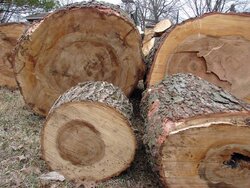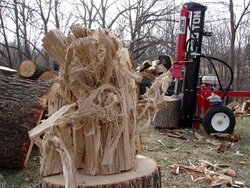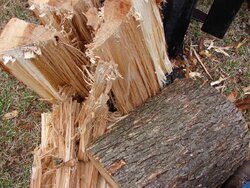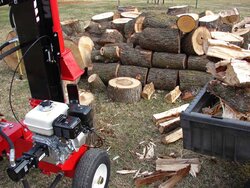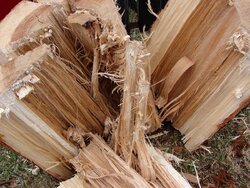An electric utility line clearance company removed several trees in an area of new construction. I had a tough time scavenging the reasonable sized pieces of wood due to all the pickups in there before I could get off work. However, several large pieces remained a few days so when the heavy equipment moved in to haul it away, well let it be said I was in the right place at the right time offering them a location to dump a few loads. The pile pictured, per the tree crew, is "locust". Can anyone familiar with locust confirm? This was a living tree so logs are very heavy to handle. I cut them into reasonable 16 inch lengths and have learned many of them are difficult to split compared to other logs the same size. The wood is very stringy, similar to hedge only much larger diameter in size. The wood seems really dense so it likely has good BTU abilities. Will it emit sparks like the hedge does?; Stacked out in the open, will it be ready for next winter? Thanks
Locust ?
- Thread starter NextEndeavor
- Start date
-
Active since 1995, Hearth.com is THE place on the internet for free information and advice about wood stoves, pellet stoves and other energy saving equipment.
We strive to provide opinions, articles, discussions and history related to Hearth Products and in a more general sense, energy issues.
We promote the EFFICIENT, RESPONSIBLE, CLEAN and SAFE use of all fuels, whether renewable or fossil.


